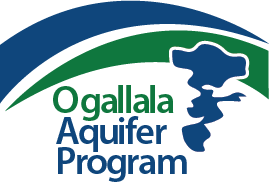By Leslie Lee, published in Texas Water Resources Institute's summer 2024 issue of txH2O magazine …
Continue Reading about Different States, Different Management Strategies →
by sarah.richardson on
By Leslie Lee, published in Texas Water Resources Institute's summer 2024 issue of txH2O magazine …
Continue Reading about Different States, Different Management Strategies →
by leslie.lee on
By Forrest Wilder, Texas Monthly The rains don’t come like they used to, and Glenn Schur can’t rely on the once bountiful water beneath the clay …
by leslie.lee on
By Allison Kite, Kansas Reflector and Kevin Hardy, Stateline JETMORE, Kan. — An inch or two of corn peeks out of the dirt, just enough to reveal …
Continue Reading about Kansas farmers brace for water cuts to save Ogallala Aquifer →
by leslie.lee on
by Drew Powell, ABC 7 Amarillo DUMAS, Texas — The United States Department of Agriculture's (USDA) Economic Research Service team conducted a study …
by sarah.richardson on
By Vance Ehmke Will the Ogallala go the way of the buffalo? The thing that very nearly led to the extinction of an entire species, …
by sarah.richardson on
By Tim Carpenter Estimates drawn from 25 years of tracking water-level, water-use The aquifer, the state’s most economically important …
by sarah.richardson on
By Scott Schrage Yield Losses intensify when groundwater dwindles, data shows Three decades of data have informed a new Nebraska-led study …
Continue Reading about Husker study finds aquifer depletion threatens crop yields →
by sarah.richardson on
By Sarah Wyant For most of my journalism career, which started in the 1980s, I’ve heard people expressing concerns about the Ogallala Aquifer …
Continue Reading about A new look at an old aquifer debate →
by sarah.richardson on
By Jennifer M. Latzke “Change is not necessary because survival is not mandatory.” Those words from a participant at the 2024 Ogallala …
Continue Reading about Time to address the Ogallala in the room →
by sarah.richardson on
By Calen Moore People in the agriculture industry are still looking for local solutions to save what is left of the Ogallala aquifer that …

